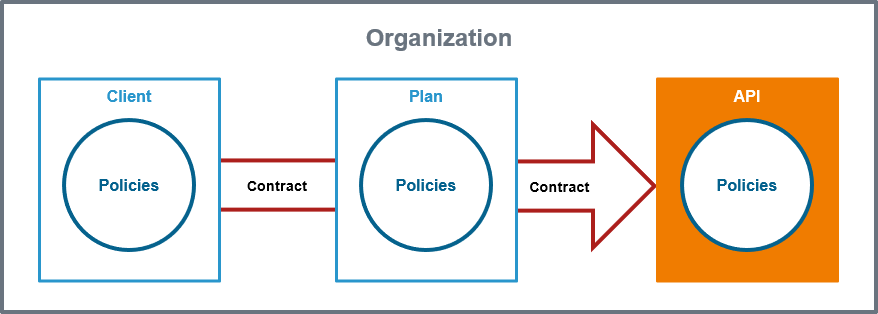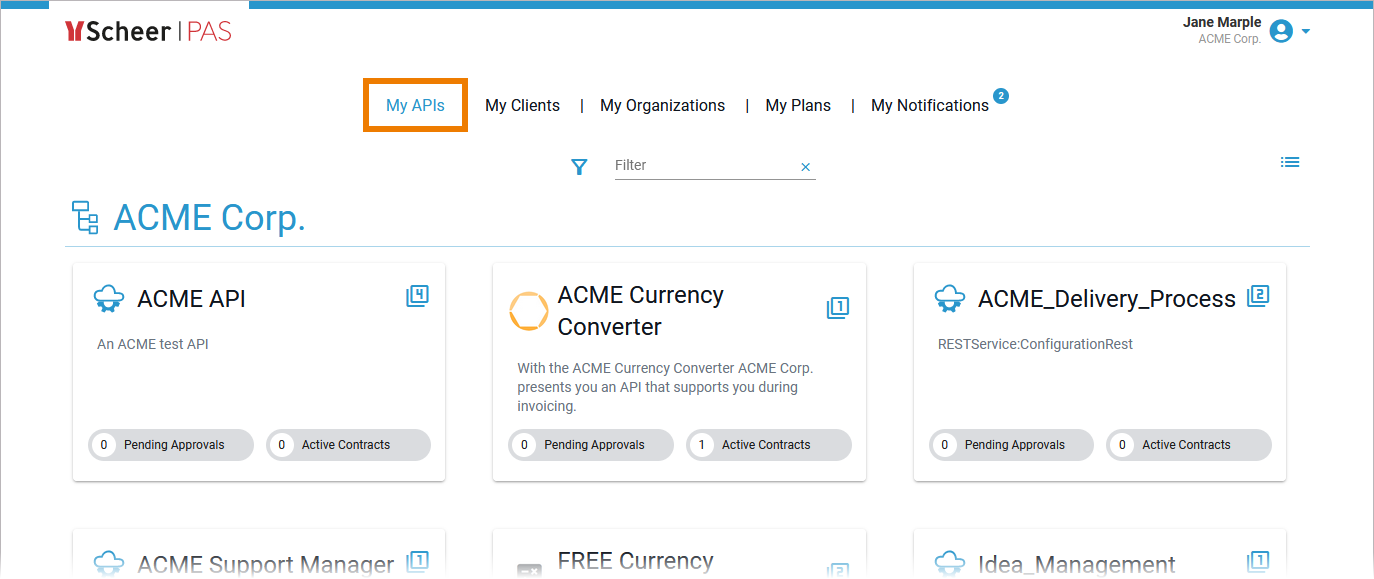What is an API?
APIs represent real backend APIs (Application Programming Interfaces). An API is also known as a service, which offers a HTTP, REST or SOAP interface that can be invoked remotely by a client.
An API consists of a set of meta data including name and description as well as an external endpoint defining the API implementation. The external API implementation endpoint includes:
The type/protocol of the endpoint (REST or SOAP).
The endpoint content type (XML or JSON).
The endpoint location (URL) so that the API can be properly proxied to at runtime.
Scheer PAS API Management provides a way to turn unmanaged (raw) back-end APIs into managed APIs by attaching policies to them. Any policies configured on an API will be applied at runtime, regardless of the client and API contract. Therefore authentication is a common policy configured at the API level.
An API has to be fully configured, including policies and implementation (and in case of public APIs including plans) to be published. If the API has been published to the gateway it can be consumed - in case of private APIs by clients.

API Contracts and API Keys
Finding an API
If you are looking for an API that has already been created, go to tab My APIs. It shows a list of all APIs your user is allowed to see, grouped by organizations:

To revise the settings of an API, you need to open its details page (see API Settings for further information).